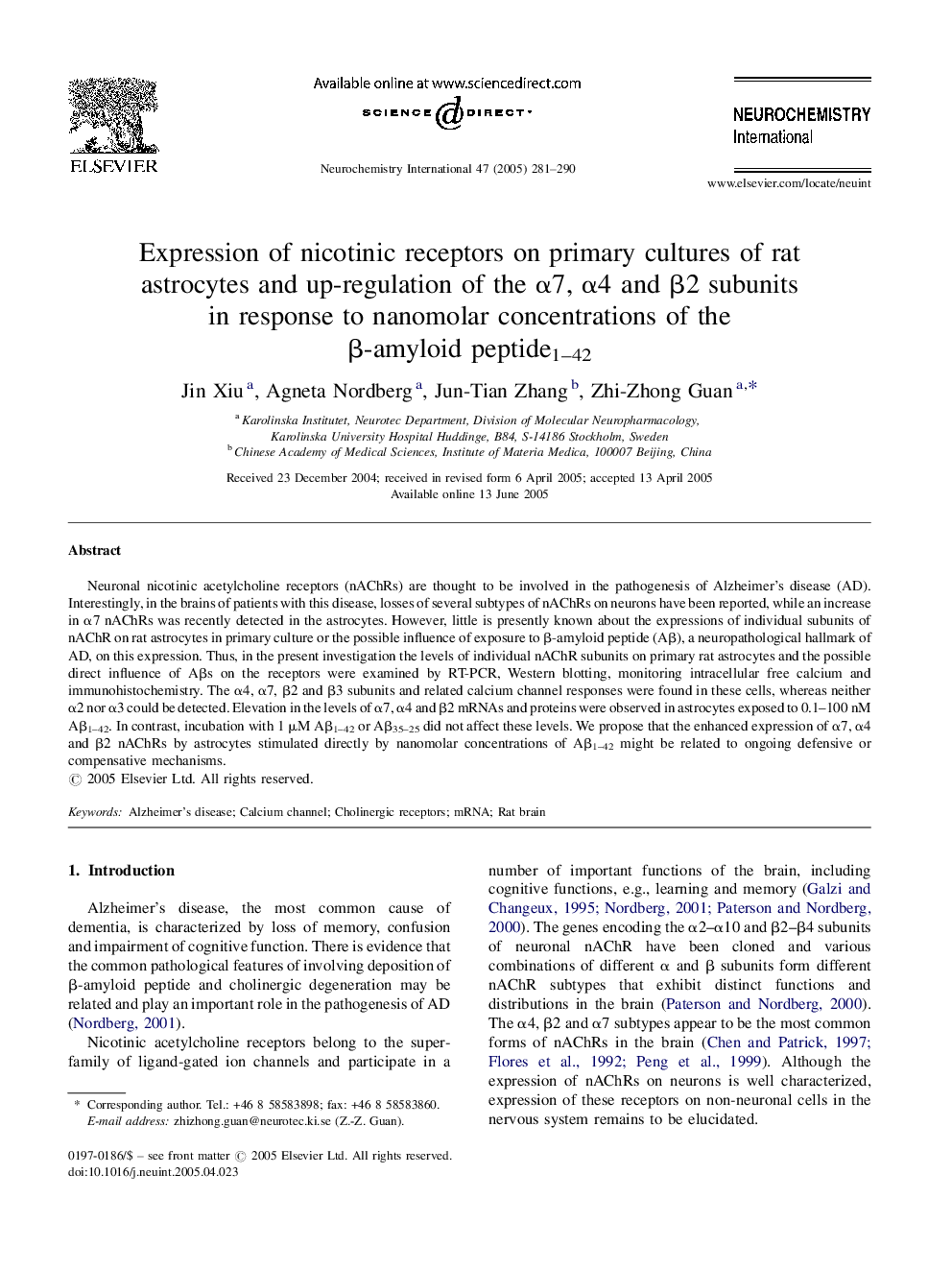| Article ID | Journal | Published Year | Pages | File Type |
|---|---|---|---|---|
| 10958489 | Neurochemistry International | 2005 | 10 Pages |
Abstract
Neuronal nicotinic acetylcholine receptors (nAChRs) are thought to be involved in the pathogenesis of Alzheimer's disease (AD). Interestingly, in the brains of patients with this disease, losses of several subtypes of nAChRs on neurons have been reported, while an increase in α7 nAChRs was recently detected in the astrocytes. However, little is presently known about the expressions of individual subunits of nAChR on rat astrocytes in primary culture or the possible influence of exposure to β-amyloid peptide (Aβ), a neuropathological hallmark of AD, on this expression. Thus, in the present investigation the levels of individual nAChR subunits on primary rat astrocytes and the possible direct influence of Aβs on the receptors were examined by RT-PCR, Western blotting, monitoring intracellular free calcium and immunohistochemistry. The α4, α7, β2 and β3 subunits and related calcium channel responses were found in these cells, whereas neither α2 nor α3 could be detected. Elevation in the levels of α7, α4 and β2 mRNAs and proteins were observed in astrocytes exposed to 0.1-100 nM Aβ1-42. In contrast, incubation with 1 μM Aβ1-42 or Aβ35-25 did not affect these levels. We propose that the enhanced expression of α7, α4 and β2 nAChRs by astrocytes stimulated directly by nanomolar concentrations of Aβ1-42 might be related to ongoing defensive or compensative mechanisms.
Related Topics
Life Sciences
Biochemistry, Genetics and Molecular Biology
Cell Biology
Authors
Jin Xiu, Agneta Nordberg, Jun-Tian Zhang, Zhi-Zhong Guan,
